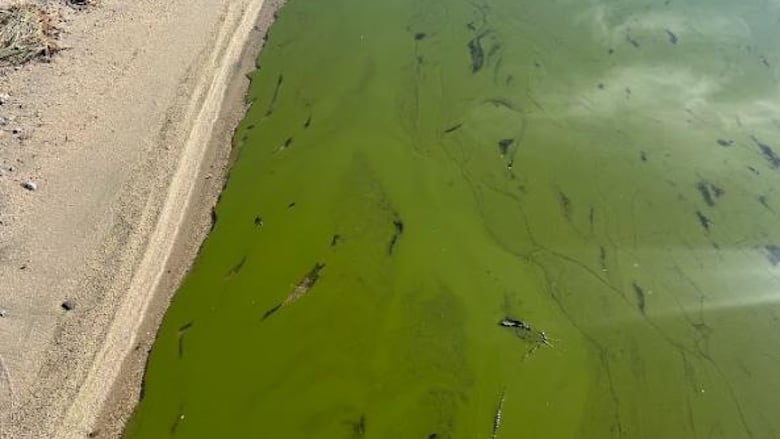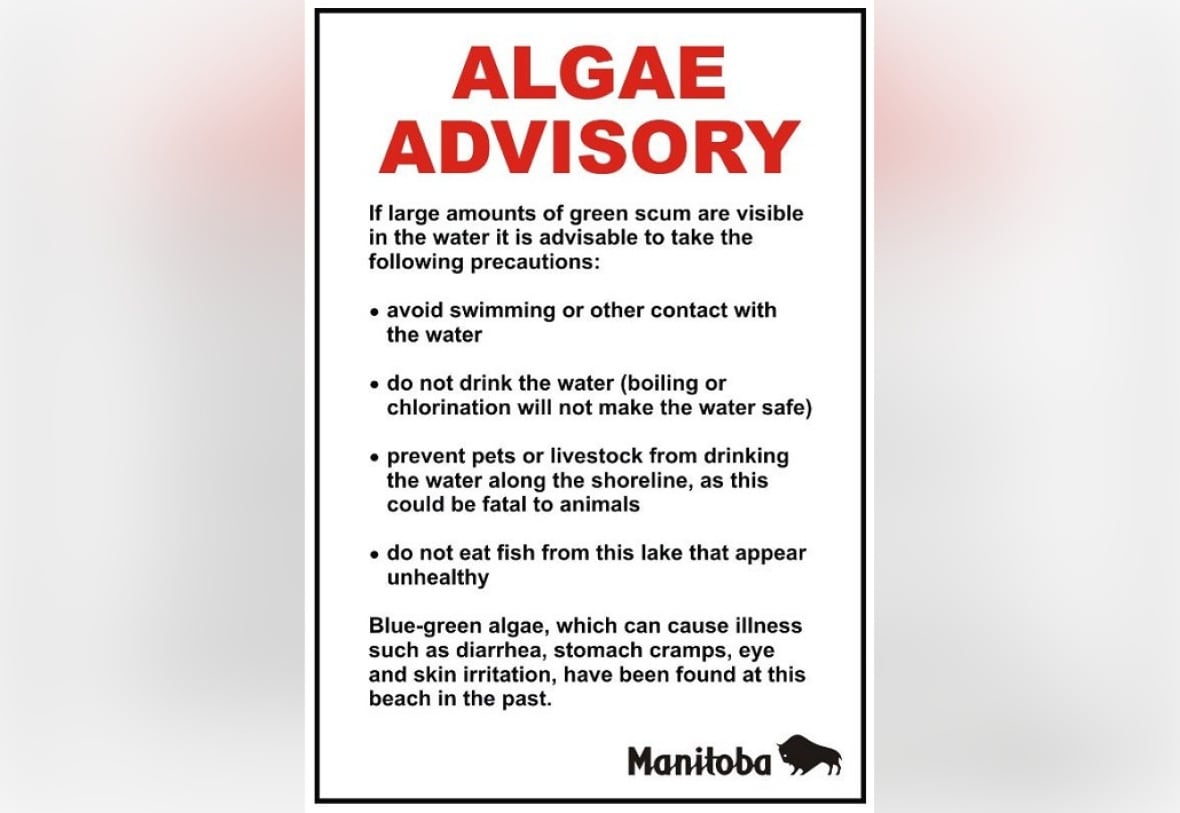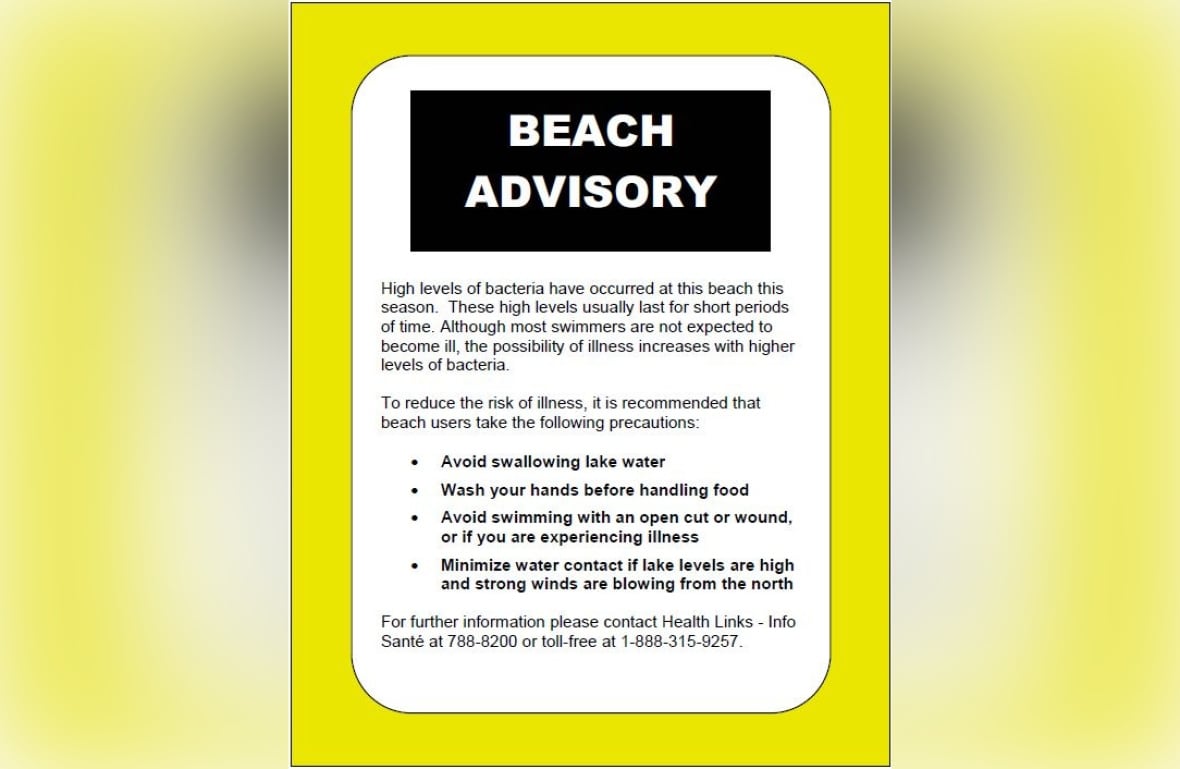Swimmers warned of algae blooms, E. coli at Manitoba beaches ahead of long weekend
Blue-green algae advisories posted at 7 beaches across province, while 4 E. coli advisories issued

The province is warning swimmers of algae blooms and Escherichia coli (E. coli) bacteria at some Manitoba beaches and reservoirs ahead of the August long weekend.
Manitoba Environment and Climate Change, which monitors the health of 57 beaches across the province through the Manitoba Clean Beaches Program, posted blue-green algae advisory signs at seven beaches this month.
Manitobans should avoid swimming, drinking or bathing in water where blue-green algae is present, the province said. Owners should also ensure their pets do not drink the water.
The province said on its website that blue-green algae has exceeded Manitoba's recreational water quality limits for the bacteria at:
- Brereton Lake South Beach.
- Hoopers Lake Beach.
- Lake Minnedosa Beach.
- Plum Coulee Beach.
- Rivers Reservoir Beach.
- Stephenfield Reservoir Beach.
- Sandy Lake Beach.
Blue-green algae, or cyanobacteria, can produce toxins that are harmful to humans and animals, the province warns. Warm, calm weather can create an ideal environment for algae to grow, forming thick scum or clumps on top of the water that give off a foul smell.

Exposure to blue-green algae toxins can cause nausea, vomiting, headache, diarrhea, skin/eye irritation, fever, respiratory symptoms and allergic reactions. Exposure can kill animals.
Residents and cottagers who use lake water as a drinking source should not consume water that has exceeded algae limits, even if a treatment system is being used. Most small treatment systems can't remove algae toxins, the province warns, and boiling or chlorination won't make algae-affected water safe to drink.
The province said E. coli were within recreational limits at most Manitoba beaches ahead of the August long weekend.
According to the province's beach water quality map, E. coli samples taken at five beaches — Gimli, West Grand, Sandy Bar, St. Malo and Winnipeg beaches — earlier this week exceed the safe recreational limit for the bacteria.
The province's beach update said advisory signs remain at Victoria, Lester, East Grand and Patricia beaches, as E. coli levels surpassed limits on July 22 but quickly dropped back to acceptable levels two days later.

When high levels of E. coli are present in water, swimmers may develop ear, eye, nose or throat infections. The bacteria may also cause mild fever, vomiting, diarrhea and stomach cramps.
Swimmers should avoid swallowing lake water, the government warned, and avoid swimming if they are ill or have an open wound.
